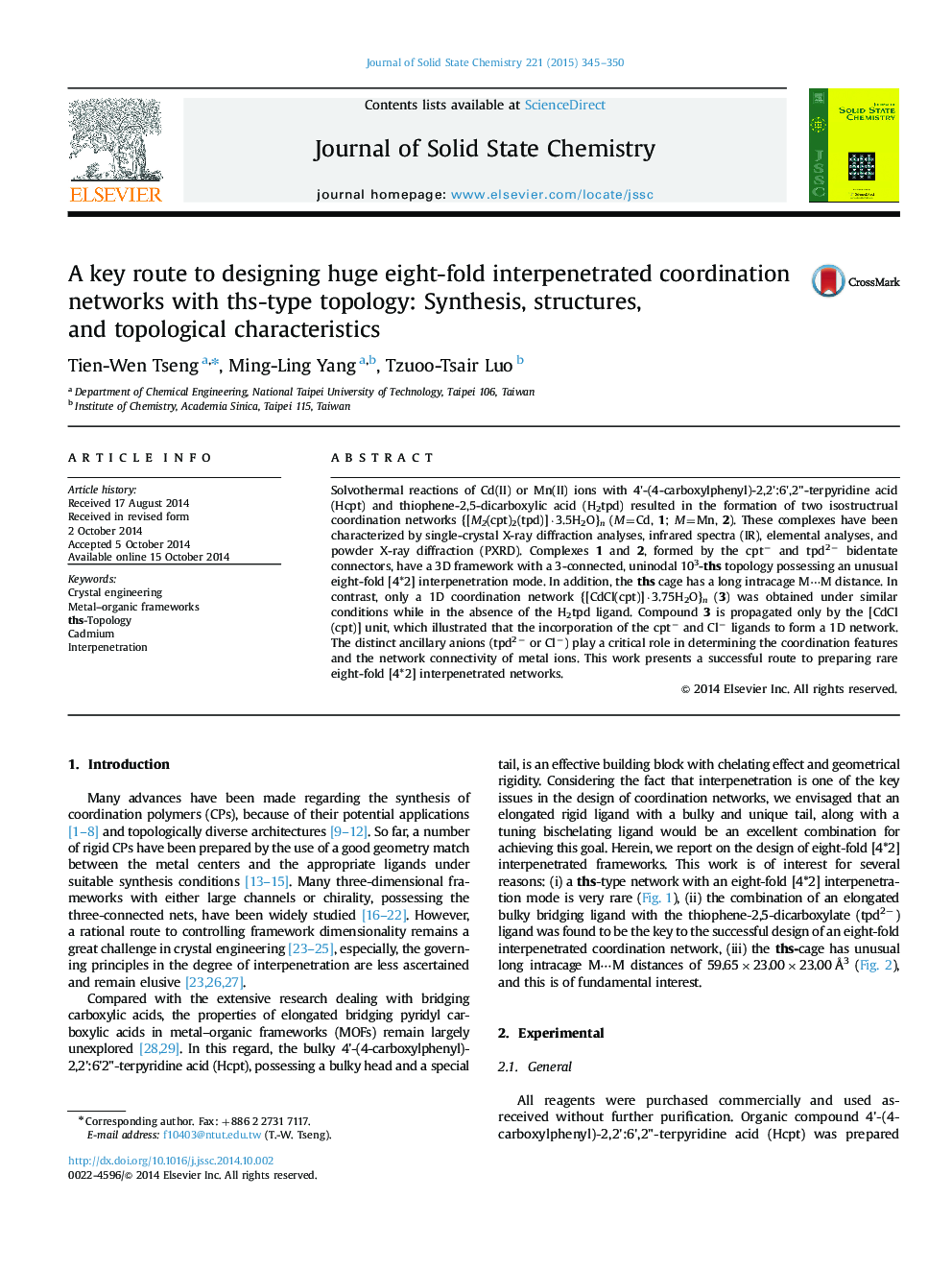| Article ID | Journal | Published Year | Pages | File Type |
|---|---|---|---|---|
| 1329644 | Journal of Solid State Chemistry | 2015 | 6 Pages |
•A ths-type network with an eight-fold [4*2] interpenetration mode is rare.•Combining elongated ligands facilitate the eight-fold interpenetrated networks.•This ths-type cage features longe intracage M⋯M distances.•The chloride anion cannot help the forming of 3D frameworks.•The integration of bulky and multi-carboxylate ligands helps the forming of ths-type MOFs.
Solvothermal reactions of Cd(II) or Mn(II) ions with 4׳-(4-carboxylphenyl)-2,2׳:6׳,2"-terpyridine acid (Hcpt) and thiophene-2,5-dicarboxylic acid (H2tpd) resulted in the formation of two isostructrual coordination networks {[M2(cpt)2(tpd)]·3.5H2O}n (M=Cd, 1; M=Mn, 2). These complexes have been characterized by single-crystal X-ray diffraction analyses, infrared spectra (IR), elemental analyses, and powder X-ray diffraction (PXRD). Complexes 1 and 2, formed by the cpt− and tpd2− bidentate connectors, have a 3D framework with a 3-connected, uninodal 103-ths topology possessing an unusual eight-fold [4*2] interpenetration mode. In addition, the ths cage has a long intracage M⋯M distance. In contrast, only a 1D coordination network {[CdCl(cpt)]·3.75H2O}n (3) was obtained under similar conditions while in the absence of the H2tpd ligand. Compound 3 is propagated only by the [CdCl(cpt)] unit, which illustrated that the incorporation of the cpt− and Cl− ligands to form a 1D network. The distinct ancillary anions (tpd2− or Cl−) play a critical role in determining the coordination features and the network connectivity of metal ions. This work presents a successful route to preparing rare eight-fold [4*2] interpenetrated networks.
Graphical abstractFigure optionsDownload full-size imageDownload as PowerPoint slide
